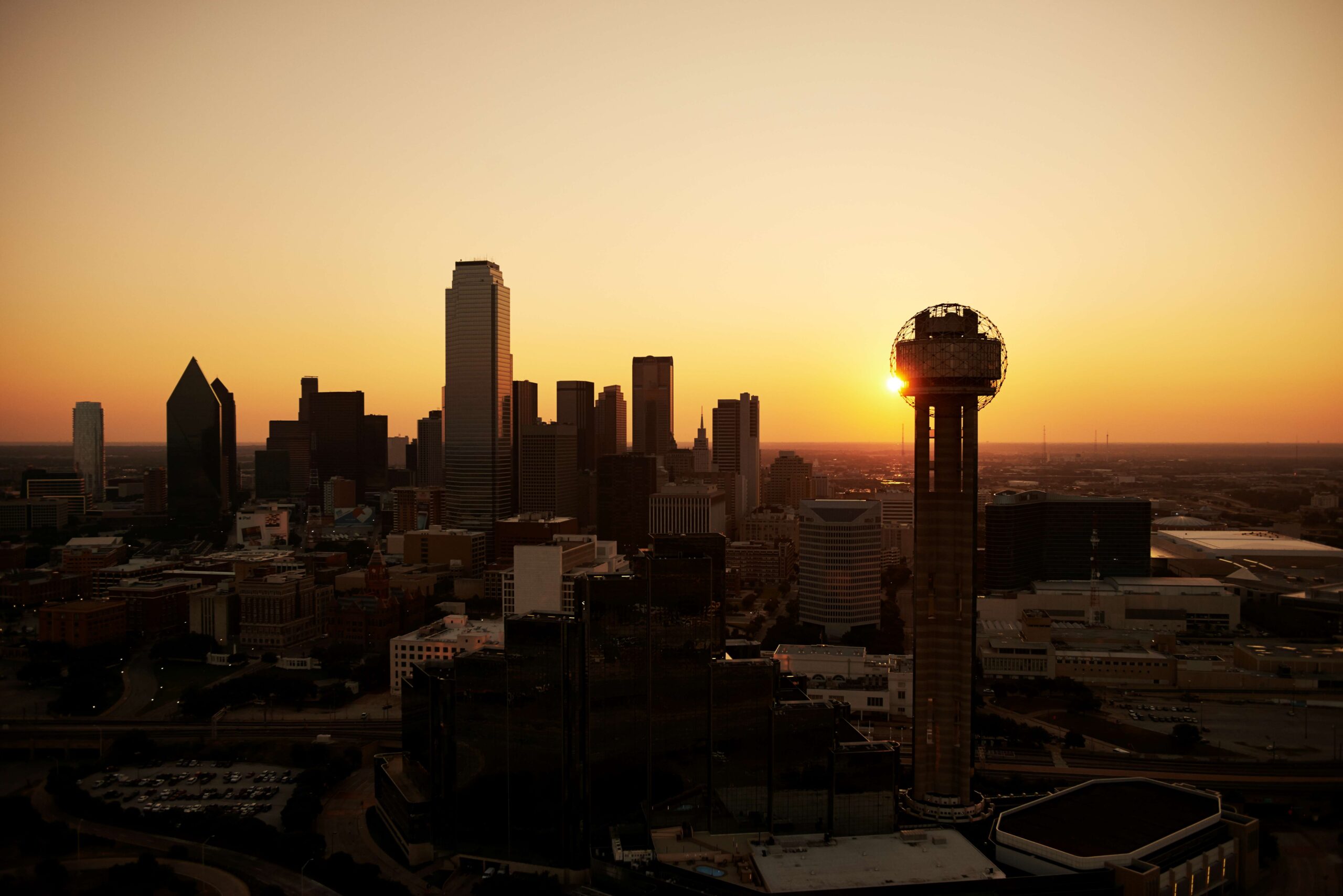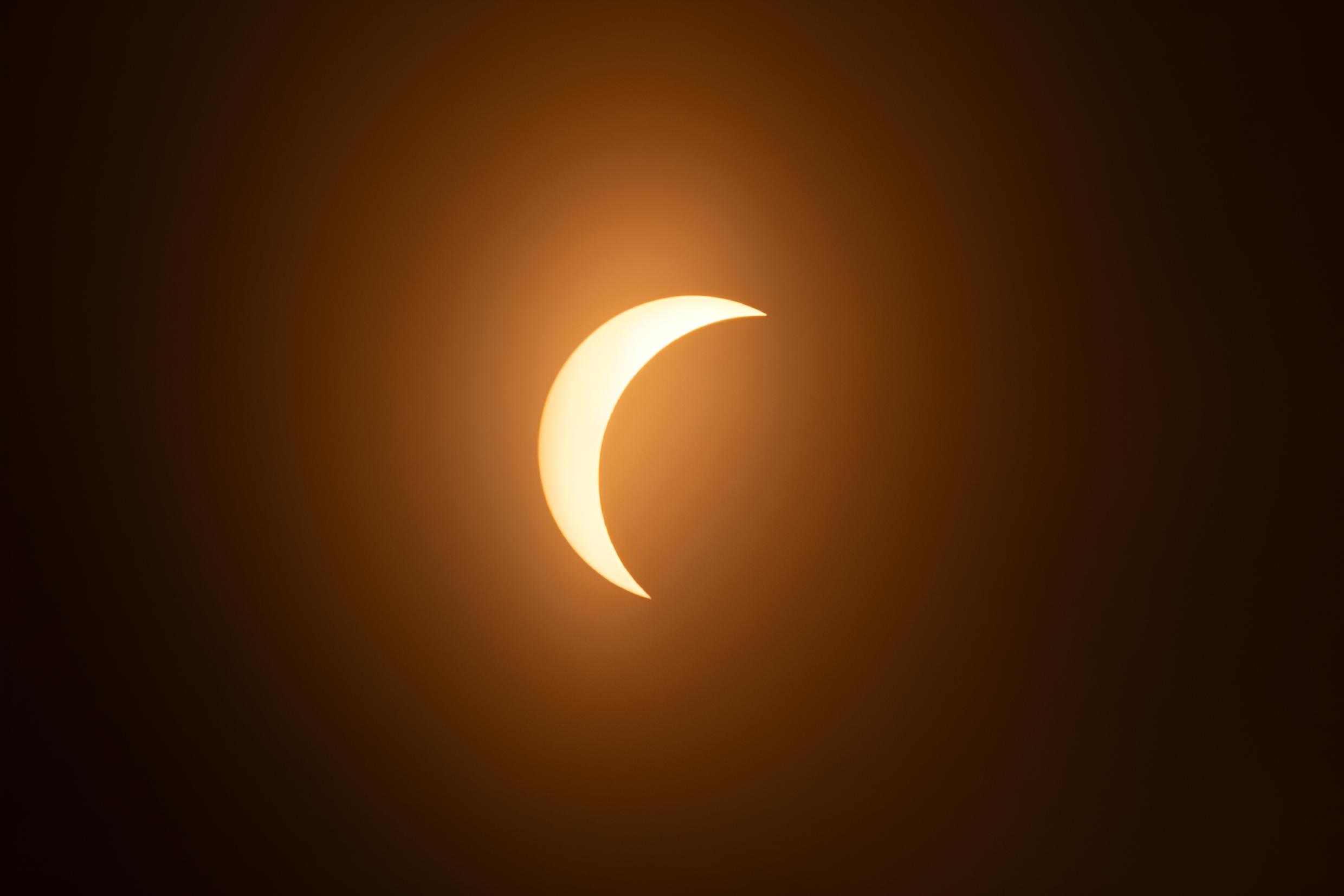Every few years, the sky over Dallas behaves differently. The lights begin to dim, the shadows lengthen, the wind dies down, and people, as if on cue, raise their heads to the heavens. A solar eclipse is not just a rare natural phenomenon, but a real urban ritual that turns the streets into carnival alleys and the central square into a point of attraction for residents, tourists, and casual passersby.
An eclipse in Dallas is not an astronomy lesson. It’s an event that involves the entire city, with food trucks, street musicians, 3D artists, benches lined with plaids, kids with painted faces, the smells of corn and barbecue, the rhythm of live music, and the anticipation you can feel in every smile.
Shades of the Holiday
The center lawn outside the Polk County Courthouse transforms into Dallas’ premier outdoor amphitheater. Everyone gathers here: those who have traveled from neighboring towns, those who remember the 2017 eclipse, and those who are holding glasses with darkened lenses for the first time.
The four-day program looks like a pocket-sized version of an art festival with a space theme every time. Night concerts, open-air movie sessions (of course, on the theme of the eclipse), a wine garden, craft workshops, a food court with local food, stores with themed paraphernalia, and performances by street artists all create a special atmosphere in which time seems to be really suspended.
What’s Going on in the Sky Anyway?
A solar eclipse is the moment when the Moon appears exactly between the Earth and the Sun, and for a short time, completely covers the solar disk. To be precise, it’s just a coincidence of size and distance: The Moon is 400 times smaller than the Sun, but it’s also 400 times closer to Earth. This unique proportion is why we can see the perfect juxtaposition of the so-called “totality”.
The shadow that the Moon casts is divided into two parts: penumbra (penumbra) and total shadow (umbra). Only those in the narrow umbra band will be able to see the total eclipse. Everyone else will see a partial one.
The speed of the shadow is tremendous. The umbra crosses the Earth’s surface at a speed of more than 2,000 kilometers per hour. The eclipse lasts only a couple of minutes, but it’s long enough to get a sense of the magnitude of what’s happening. The light dims to deep twilight, stars appear, temperatures can drop several degrees, and birds begin to act as if it’s nighttime.
Why Dallas?
During the 2017 solar eclipse, Dallas was in the path of total shadow at the perfect point where weather conditions were conducive to observation. Cloud cover along the Oregon coast and the risk of smoke in eastern Oregon made this city particularly attractive to “eclipse hunters”.
Since then, Dallas has embraced the eclipse as part of its urban culture. It has become an excuse for annual mini-festivals where eclipses are not a requirement, but always a welcome guest. When a new “total” eclipse appears on the horizon, the atmosphere in the city really starts to change as if the sky itself is hinting: it’s time to get ready for the show.
Here are some tips for those who want to experience the eclipse to the fullest:
- Protect your eyes. Special eclipse glasses are a necessity, not a souvenir. Looking at the Sun through sunglasses, film, or a welding filter is a bad idea. It’s better to get certified protective equipment beforehand.
- Study the path of the shadow. A total eclipse is only visible within a narrow band. If you’re not sure if your neighborhood falls within it, check with NASA maps or other astronomical services.
- Arrive early. Hotels, campgrounds, and parking lots are booked well in advance for the eclipse. The city itself takes on a special rhythm, with temporary art objects, stages, souvenir tents, and coffee on every corner.
- Observe carefully. The beginning and end of the eclipse are magical moments. The light changes gradually and then drops dramatically, as if someone has put out a lamp. It is worth being at this moment “here and now” because it is impossible to repeat it on the screen.
Such an experience is not recorded by a camera and is not transmitted by words; it is lived with the whole body and is remembered for a long time.
What About Tourists?

All you need is a good attitude, curiosity, and a little patience. In addition to the central square, there are many points with a good view of the city: parks, open terraces, and farm fields with authorized entrances.
Incidentally, farms and wineries often host their own events on eclipse days: sunrise breakfasts, yoga on the lawn, astronomer lectures, and wine tastings.
You can also check out the stores in the historic center. Collectibles, posters, books, and even local artwork dedicated to the eclipse usually appear there.
Space Is an Excuse to Stop
A solar eclipse is a lesson in modesty. In these brief moments, routines, plans, and deadlines disappear. The city goes silent, and everything seems to be listening to the sky. Dallas turns this scientific fact into a human event every time.
It’s a celebration in which the cosmos is the protagonist and we are the attentive spectators. Even if the Moon covers the Sun for just a couple of minutes, the memory of it will last a long time.
Until the next eclipse.
